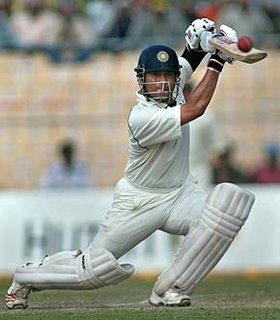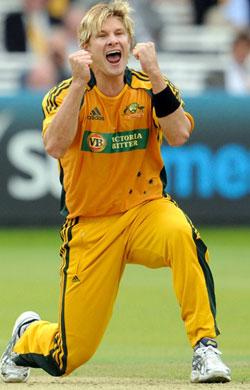
About Virender Sehwag
Full name Virender Sehwag
Born October 20, 1978, Delhi
Current age 32 years 91 days
Batting style Right-hand bat
Bowling style Right-arm offbreak
Major teams India, Asia XI, Delhi, Delhi Daredevils, ICC World XI, India Blue, Leicestershire, Rajasthan Cricket Association President's XI
Virender Sehwag Profile
Virender Sehwag has constructed an extraordinary career with a relentless quest, and a genius, for boundary hitting. With minimal footwork but maximum intent, he has piled Test runs at a faster pace than anyone in the history of cricket. Bowlers must always fancy their chances against a batsman who plays so many strokes; it's just that Sehwag fancies his chances against them much more.
As a starry-eyed youngster from Najafgarh, where his family ran a flour mill, Sehwag grew up, like many others from his generation, wanting to be Sachin Tendulkar. Indeed, when he scored his first one-day hundred, filling up for his injured idol against New Zealand in Sri Lanka, he could have been mistaken for him: there was the same back-foot punch on the off side, the minimalistic straight drive and the wristy whip to the leg. And on his Test debut, on a fiery pitch in Bloemfontein, he matched the master stroke for stroke as they both blazed away to hundreds. But soon he emerged his own man, and not long after Tendulkar was playing a supporting, and somewhat calming, hand as Sehwag romped away to a triple-hundred, the first by an Indian, in Multan, bringing it up with a six. Two Tests ago, he had been dismissed trying the same stroke five short of what would have been his first Test double-hundred.
His uncomplicated approach - batting is all about scoring as many runs as quickly as possible - belies a sharp and street-smart cricket mind. He has a keen grasp of his own, and his opponents', strengths and weaknesses and exploits them in a forensic manner. What appears risky to many, is merely an opportunity for him, and his lack of footwork, which does get him in trouble against the moving ball, is mostly an advantage, for it creates space for his brilliant handwork. Few batsmen have hit the ball harder square on the off side, and fewer still have hit them as frequently. And the sight of a spinner brings the savage out in him: and for many spectacular assaults against the world's leading spinners, there have numerous outrageous dismissals against the not-so-reputed ones.
The most remarkable aspect of Sehwag's career of course has been his ability to build massive Test scores at breathtaking speed. He holds the Indian record for highest number of Test double-hundreds, and came within seven runs of becoming the first batsman to score three triple-hundreds. That innings, against Sri Lanka at the Brabourne Stadium in Mumbai, epitomised the Sehwag brand of batsmanship: a mix of imagination, daring, power, skills, and clarity of vision.
He is equally refreshing off the field and shares his views on the game in an endearingly direct and candid manner, a rare trait among contemporary cricketers. He is, in every sense, a true original.
Fast Facts
* Virender Sehwag became the first to retain Wisden's 'Leading Cricketer of the Year' honours in 2010. In the same year, he also received the ICC Test Player of the Year award.
* He became the 11th Indian to score a century on Test debut.
* He became the third overall and the first Indian batsman to stroke two triple centuries in Tests. His second against South Africa in Chennai was the fastest ever, coming off just 278 deliveries.
* As of December 2010, Sehwag holds the record for the fastest ODI century for an Indian which came against New Zealand in 2009 off just 60 balls.
* He became the fastest Indian to reach the 3000-run mark in Tests, reaching the feat in just 55 innings.
* Sehwag took 134 Test innings to reach 7000 Test runs, becoming the second fastest to do so after Englishman Wally Hammond.
* With 11 consecutive 150 plus scores, he holds a distinct record for consecutive Test hundreds converted to 150 or more.












































